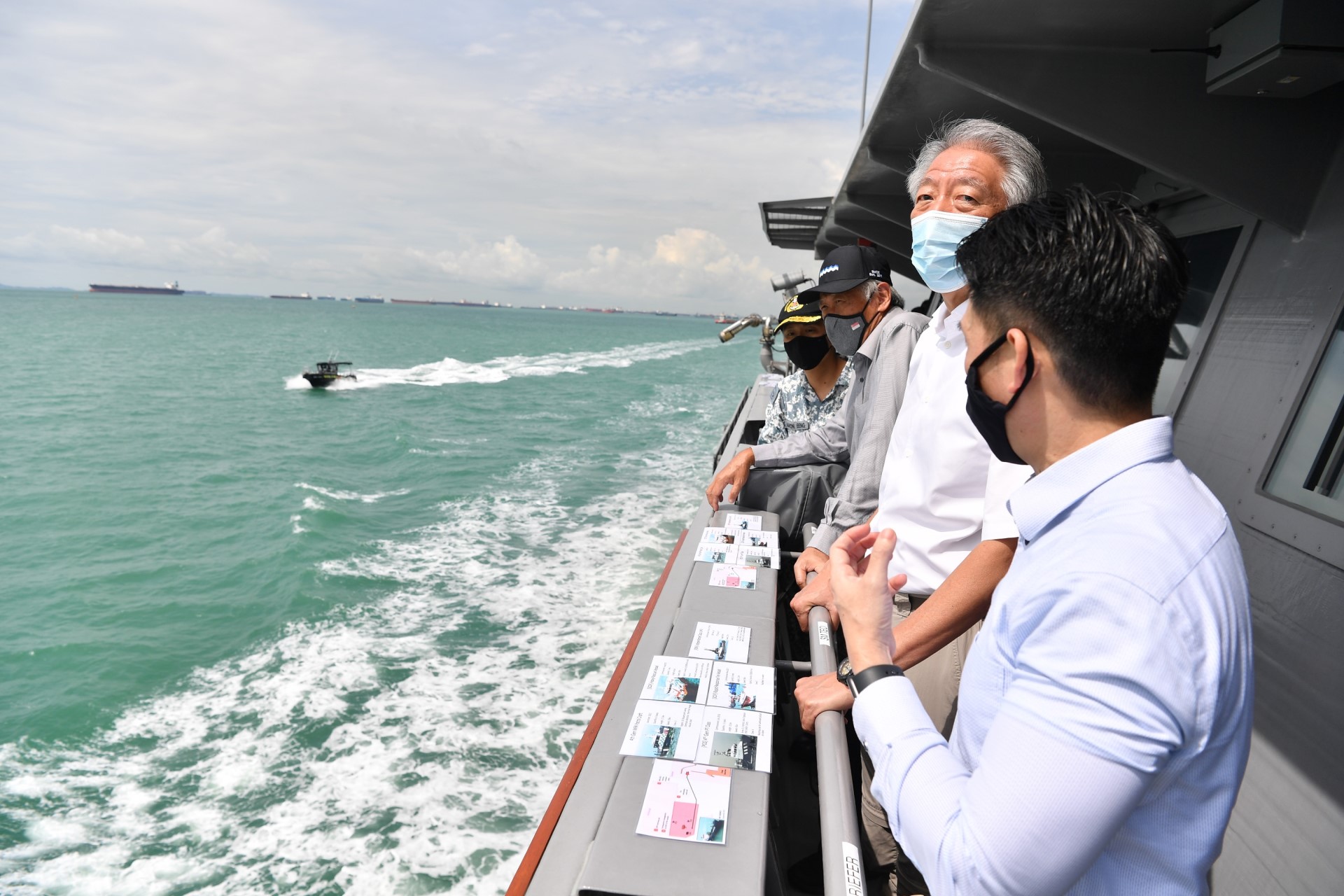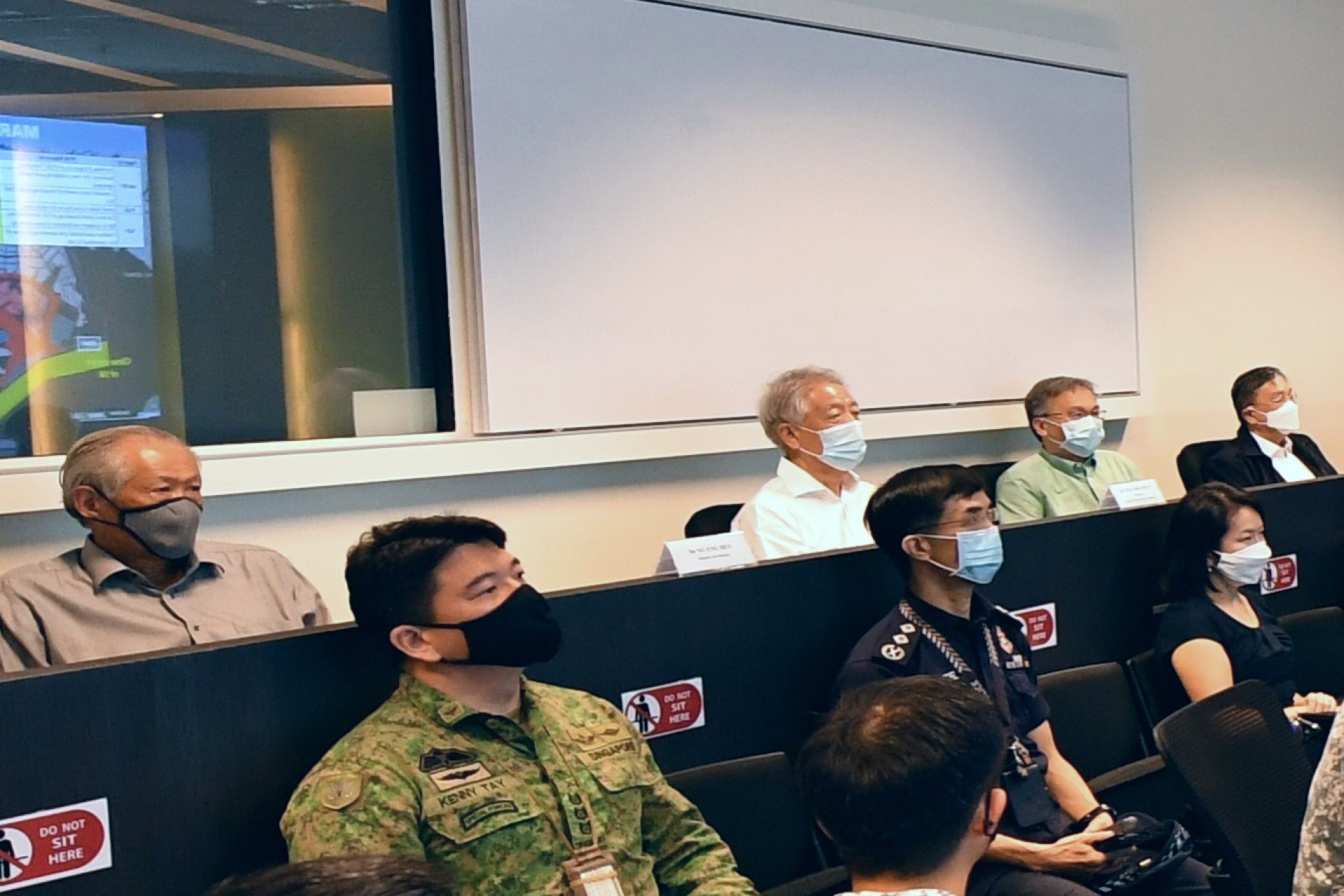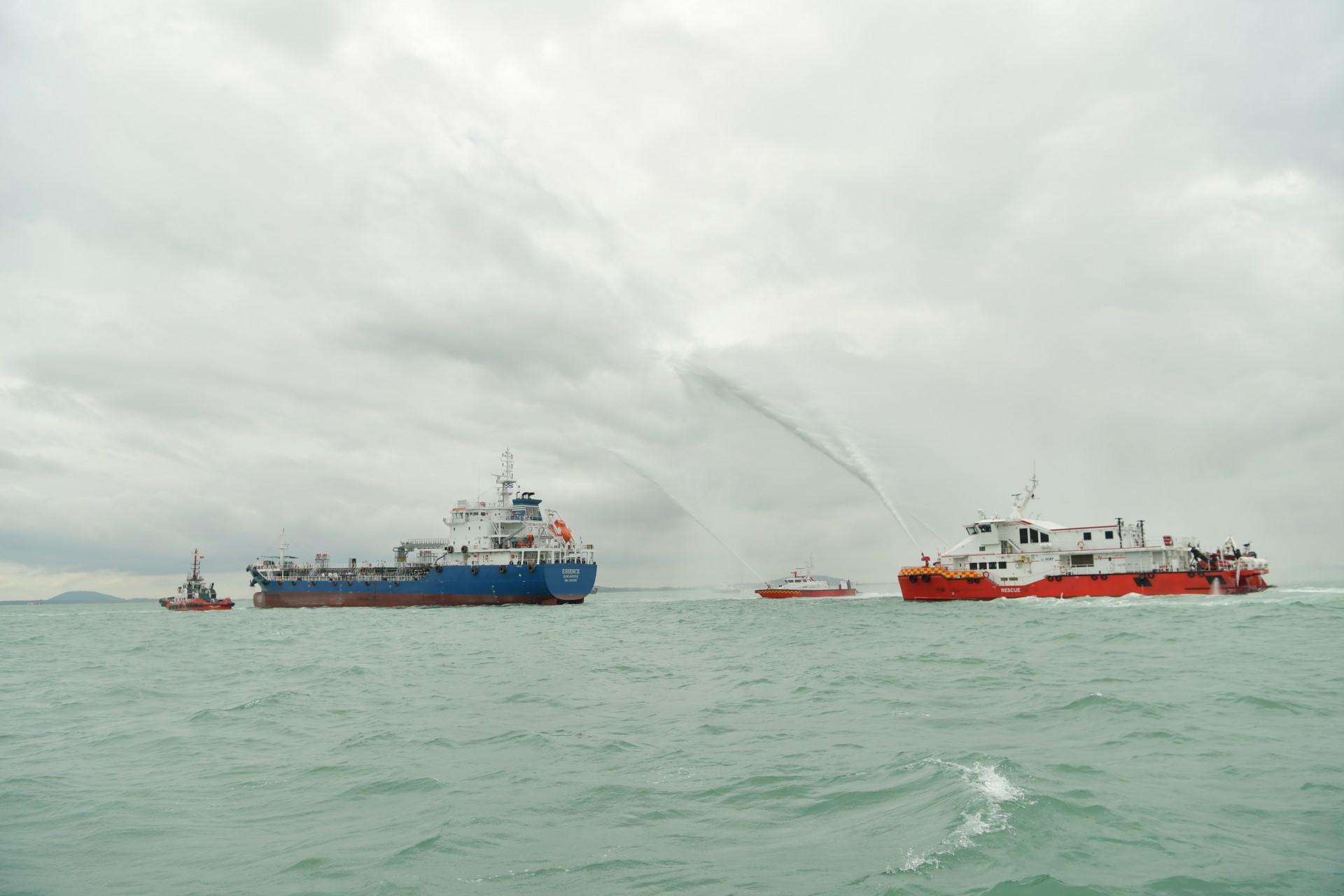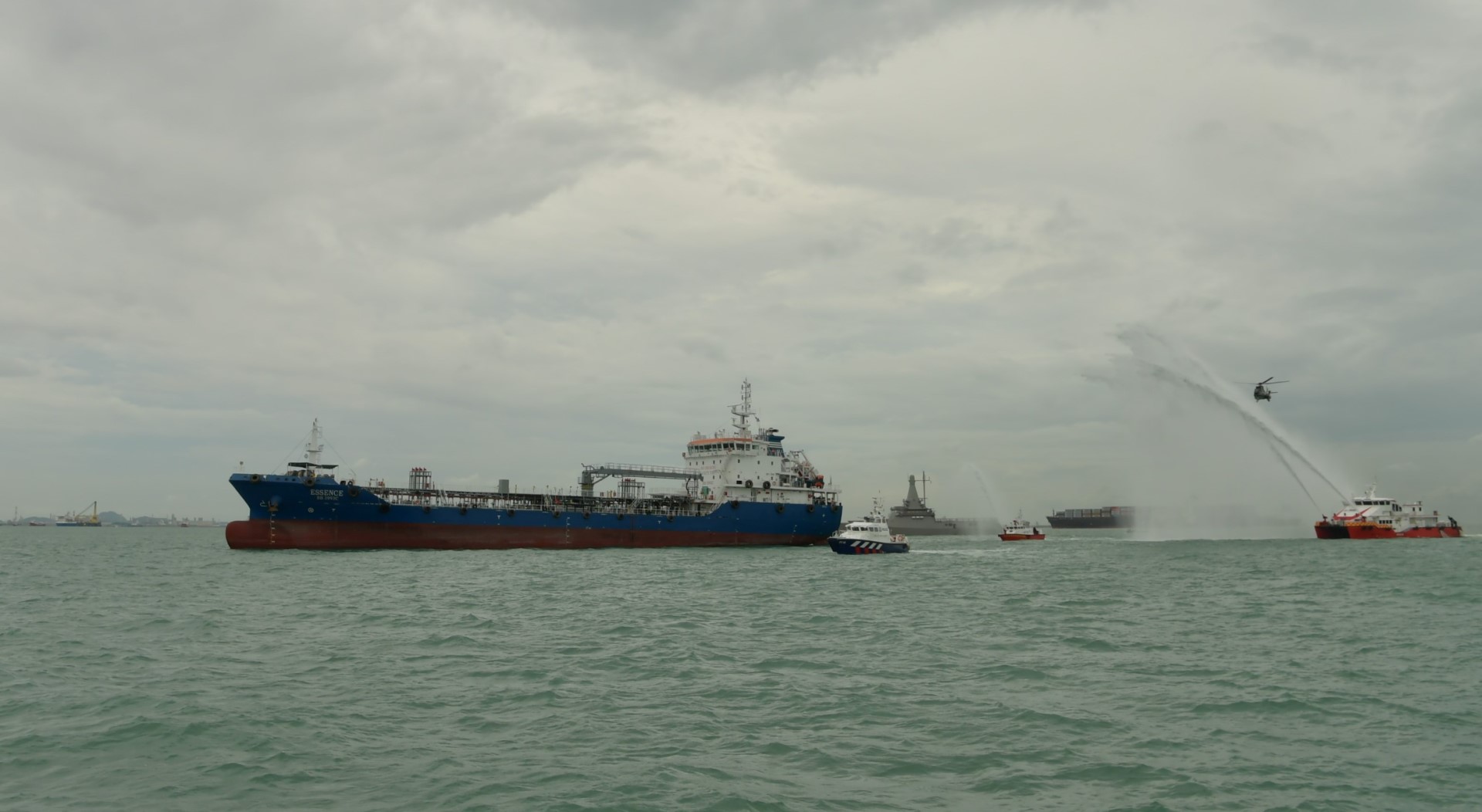Senior Minister and Coordinating Minister for National Security Mr Teo Chee Hean visited RSS Singapura – Changi Naval Base to observe Exercise Highcrest 2021 earlier today. During the visit, Mr Teo was also apprised of the progress that the Singapore Maritime Crisis Centre (SMCC) has made in building new operational capabilities and strengthening Whole-Of-Government (WoG) responses to detect and tackle maritime security threats. Also present at the visit were Minister for Defence Dr Ng Eng Hen, members of the Security Policy Review Committee and senior ministry officials.
Held from 8 to 12 November 2021, Exercise Highcrest 2021 focused on exercising inter-agency coordination, validating plans such as lockdown measures in the maritime traffic domain and neutralising threats on board a hijacked vessel, in response to a simulated terrorist attack on key coastal installations. The exercise involved more than 450 personnel from the Republic of Singapore Navy (RSN), Police Coast Guard (PCG), Maritime and Port Authority of Singapore (MPA), Immigration and Checkpoints Authority (ICA), Singapore Customs and Singapore Civil Defence Force (SCDF). Personnel and assets from the Republic of Singapore Air Force and Special Operations Task Force (SOTF) also participated in the exercise.
Mr Teo was briefed on how the SMCC is strengthening its capabilities to detect maritime security threats as early and as far away from Singapore as possible. He sailed on the RSN's Independence-class Littoral Mission Vessel RSS Fortitude and observed inter-agency collaborative efforts to neutralise the simulated terrorist threat. This included the securing of the area of operations by the RSN's Maritime Security Task Force and PCG, MPA's diversion and management of maritime traffic, SOTF storming operations on board the hijacked vessel, and activation of SCDF to extinguish a simulated fire on board the vessel. Mr Teo also observed the agencies' collective response to manage the aftermath of the simulated terrorist attack, while implementing measures to prevent follow-on attacks at sea.
Speaking to the media after the visit, Mr Teo emphasised the importance of Singapore's vigilance and readiness to tackle maritime security threats. "Singapore sits on a major sea route in the world, connecting the Indian Ocean and the Pacific Ocean. We also have one of the busiest ports in the world, with more than 400 major ships calling into the port every day. It is important for us to continue to maintain a very high level of security against maritime threats. In the last 10 years, each of the agencies in the SMCC has also increased its capabilities. The coordination between agencies has also increased, which has enhanced our capability to deal with maritime threats."
Mr Teo commended the SMCC for playing a pivotal role in driving and overseeing national maritime security operations, and providing early warning against potential maritime terrorist attacks. He said, "One of the things that the SMCC is doing is developing a new sense-making system to bring in more databases, do more data analytics to try to detect possible threat patterns earlier, so that we can be sensitised to them and we can deal with them earlier. So that when the threats arrive closer to our shores, we are ready to deter them, to investigate them and make sure that they do not present themselves as threats. Each of the components of the SMCC has improved, the integration of the components has improved and the command and control system to detect earlier, to sense earlier and respond earlier has also improved."
The SMCC was established in 2011 and this year's exercise marks a decade of SMCC operations. The SMCC's Next-Generation sense-making system, which employs big data and analytics to detect maritime threats in real time, was also unveiled today.
 Senior Minister and Coordinating Minister for National Security Mr Teo Chee Hean (second from right), accompanied by Minister for Defence Dr Ng Eng Hen (second from left) witnessing a sea demonstration on RSS Fortitude, during a visit to Exercise Highcrest 2021 (XHC21).
Senior Minister and Coordinating Minister for National Security Mr Teo Chee Hean (second from right), accompanied by Minister for Defence Dr Ng Eng Hen (second from left) witnessing a sea demonstration on RSS Fortitude, during a visit to Exercise Highcrest 2021 (XHC21).
 Dr Ng (left) and Mr Teo (middle) receiving a brief during XHC21.
Dr Ng (left) and Mr Teo (middle) receiving a brief during XHC21.
 The Special Operations Task Force storming the 'hijacked' vessel during a sea demonstration for XHC21.
The Special Operations Task Force storming the 'hijacked' vessel during a sea demonstration for XHC21.
 The Singapore Civil Defence Force's fire-fighting vessels are deployed to the scene to extinguish the simulated fire that broke out on board the 'hijacked' vessel.
The Singapore Civil Defence Force's fire-fighting vessels are deployed to the scene to extinguish the simulated fire that broke out on board the 'hijacked' vessel.
 National maritime agencies coordinated a Whole-of-Government response to a 'hijacked' vessel.
National maritime agencies coordinated a Whole-of-Government response to a 'hijacked' vessel.





